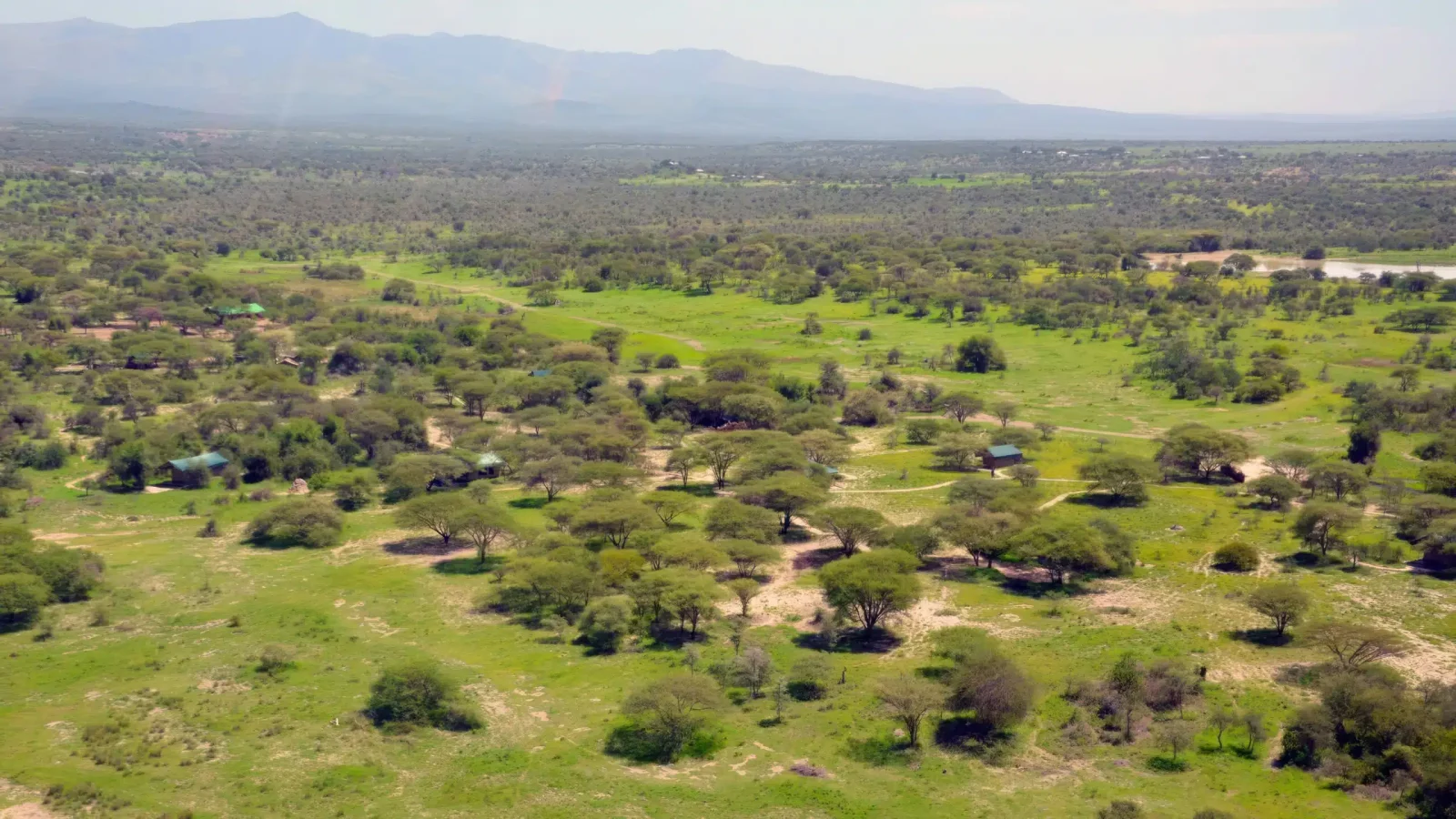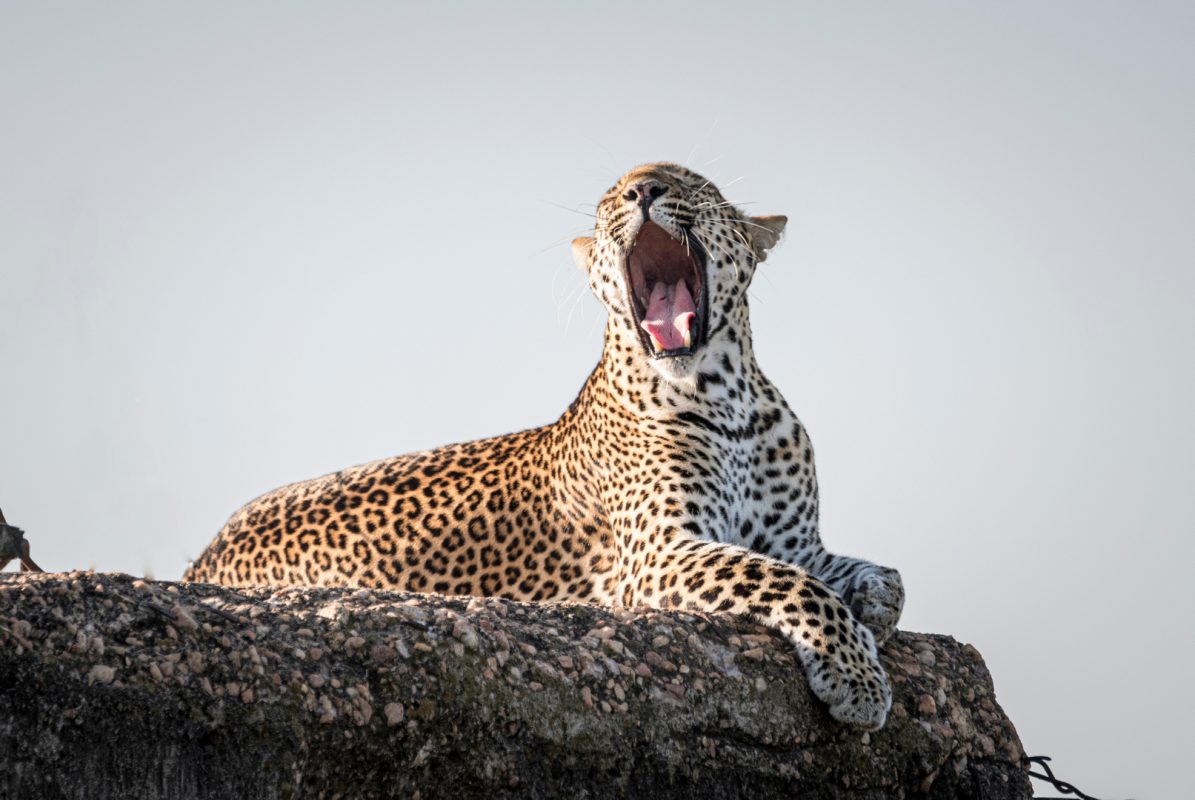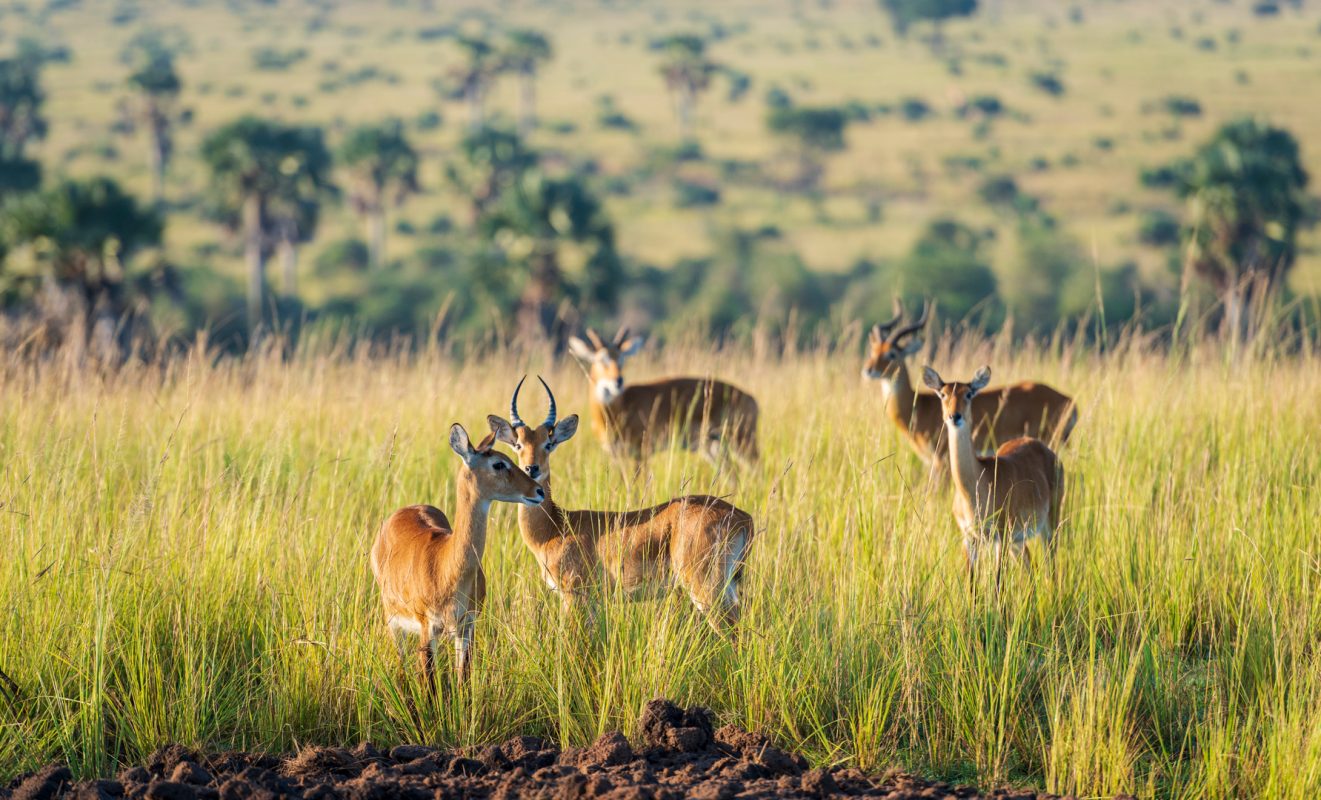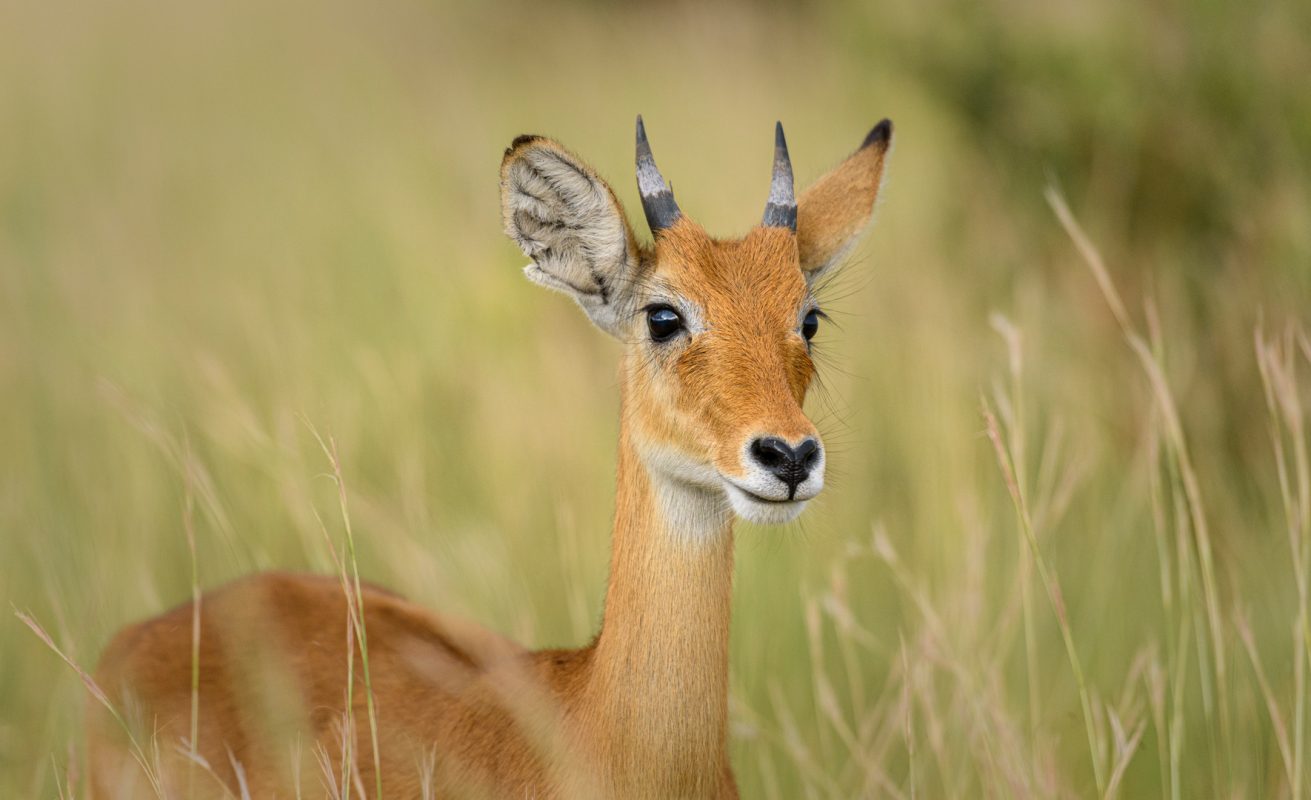Meru National Park – All You Need To Know Before You Go (with Photos and Videos)
All you need to know about Meru National Park Kenya before you go for a Kenya safari. Mount Meru National Park is a national park in central Kenya, located about 350 kilometers northeast of Nairobi. It covers an area of 870 square kilometers and is situated east of the Tana River. The park was established in 1966 and is part of a larger conservation area that includes the adjacent Bisanadi and Mwingi National Reserves.
Meru National Park gained international attention through the book “Born Free” by Joy Adamson, which documented her experiences raising an orphaned lioness, Elsa, and eventually releasing her into the wild in the park. The park suffered from poaching and insecurity in the 1980s and 1990s but has since seen improvements in conservation efforts. Today, it is a popular destination for safari enthusiasts seeking a less crowded alternative to some of Kenya’s more famous national parks.
Key Features and Information about Meru National Park
- Landscape and Ecosystem
- Wildlife
- Birdlife
- Activities
- Cultural Heritage
- Accommodation
Landscapes and Ecosystem on Meru National Park
Meru National Park in Kenya features diverse landscapes and ecosystems, creating a rich and varied environment for both flora and fauna. The combination of these diverse landscapes and ecosystems contributes to the high biodiversity of Meru National Park, making it an attractive destination for wildlife enthusiasts and conservationists alike. The park’s varied terrain allows for a rich array of plant and animal species to thrive in different habitats, creating a dynamic and interconnected ecosystem.
Large expanses of open grasslands characterize parts of Meru National Park. These areas are often home to grazing herbivores such as zebras, buffalos, and various antelope species. The park is crisscrossed by numerous rivers, including the Tana River. Along the riverbanks, you can find riverine forests, providing habitat for various bird species, primates, and other wildlife.
Key Elements of the Landscapes and Ecosystems Found in Meru National Park
- Open Grasslands
- Riverine Forests
- Acacia Woodlands
- Bushy Thickets
- Mount Kenya Influence
- Rivers and Wetlands
- Rocky Outcrops
- Swamps and Marshlands
- Savannah and Plains
- Cultural Sites
Wildlife Adventure in Meru National Park
Embarking on a wildlife adventure in Meru National Park can be an exciting and rewarding experience. Remember to follow ethical wildlife viewing practices, respect the natural environment, and adhere to park regulations for a sustainable and responsible safari experience. Whether you’re a seasoned Kenya safari enthusiast or a first-time visitor, Meru National Park has much to offer in terms of wildlife diversity and natural beauty.
Explore the park on game drives to witness a diverse range of wildlife. The park is home to elephants, lions, leopards, cheetahs, giraffes, buffalos, zebras, various antelope species, and more.
Meru Park is known for its efforts in rhinoceros conservation. Take the opportunity to see both black and white rhinos in their natural habitat. The park played a significant role in the reintroduction of rhinos to the region.
With over 400 bird species, Meru National Park is a paradise for birdwatchers. Bring your binoculars and camera to spot a variety of birds, including ostriches, herons, sunbirds, eagles, and vultures.
Explore the riverine forests along the banks of the Tana River. These areas offer a different perspective and provide opportunities to spot wildlife adapted to the riverine environment.
Activities and Highlights That Make a Wildlife Safari in Meru National Park Memorable
- Game Drives
- Rhinoceros Conservation
- Bird watching
- Riverine Forest Exploration
- Cultural and Historical Sites
- Guided Walks and Hikes
- Fishing
- Night Game Drives
- Photography Opportunities
- Accommodation Choices
Bird Watching and Birdlife of Meru National Park
Meru National Park is a haven for bird enthusiasts, offering a diverse range of avian species in various habitats. The park’s rich birdlife is one of its key attractions, with over 400 species recorded.
To make the most of your bird watching experience, consider hiring a knowledgeable guide who can help identify and provide insights into the behaviors of the various bird species. Bring binoculars and a field guide to enhance your ability to spot and identify the diverse birdlife in Meru National Park.
Highlights of Bird Watching and the Birdlife in Meru Park
- Ostriches
- Waterbirds
- Birds of Prey
- Sunbirds
- Hornbills
- Secretary Bird
- Guinea Fowl
- Kingfishers
- Hamerkop
- Abyssinian Ground Hornbill
- Flamingos
Notable Safari Activities in Meru National Park
Meru National Park offers a variety of Kenya safari activities that cater to the interests of wildlife enthusiasts and nature lovers. Before embarking on any safari activity, it’s important to check with the park authorities or your safari operator to ensure compliance with regulations and guidelines. Additionally, hiring knowledgeable guides enhances the overall safari experience by providing insights into the park’s ecology and wildlife.
Explore the park’s diverse landscapes on game drives. Experienced guides will take you through different habitats, increasing your chances of spotting a wide array of wildlife, including elephants, lions, giraffes, zebras, and various antelope species.
Meru Park is renowned for its rhinoceros conservation efforts. Join a guided safari specifically focused on tracking and observing both black and white rhinos in their natural habitat.
Take advantage of the park’s rich birdlife by engaging in bird watching. Bring binoculars and a field guide to identify the numerous bird species, including waterbirds, raptors, sunbirds, and more.
Notable Safari Activities You Can Enjoy in Meru National Park
- Game Drives
- Rhinoceros Tracking
- Bird Watching
- Cultural Tours
- Guided Nature Walks
- Fishing
- Night Game Drives
- Scenic Sundowner
- Camping and Bush Dinners
- Photography Safaris
- Hot Air Balloon Safaris
Cultural Heritage of Meru National Park
Meru National Park in Kenya has a rich cultural heritage that adds depth to the overall safari experience. The park is not only known for its diverse wildlife and landscapes but also for its historical and cultural significance.
Exploring the cultural heritage of Meru National Park not only enhances the safari experience but also fosters a deeper appreciation for the interconnectedness of nature and human history in the region. When participating in cultural activities, it’s important to do so respectfully and responsibly, adhering to local customs and regulations.
The park is home to various archeological sites that offer insights into the early human communities that once inhabited the region. These sites provide evidence of ancient human activities and help researchers understand the historical context of the area.
Aspects of the Cultural Heritage of Meru National Park
Archeological Sites
Cultural Tours: Guided cultural tours within the park allow visitors to learn about the traditions, customs, and daily lives of the local communities. Knowledgeable guides share information about the history of the region, traditional practices, and the significance of certain landmarks.
Tharaka People: The Tharaka people are one of the communities associated with Meru National Park. Engaging with local communities provides an opportunity to learn about their way of life, traditional dances, and rituals. Some cultural tours may include visits to Tharaka villages.
Traditional Medicine: Local communities in the Meru region often have a rich tradition of herbal medicine. Guided tours may include visits to traditional healers who use local plants and herbs for medicinal purposes. This offers insights into the traditional healthcare practices of the area.
Cultural Performances
Cultural performances, including traditional dances and music, are often organized for visitors. These performances showcase the vibrant cultural heritage of the local communities and provide a lively and entertaining experience.
Historical Significance: Meru Park gained international attention through the book “Born Free” by Joy Adamson. The park was the setting for the rehabilitation and release of Elsa the lioness. Although not directly a cultural aspect, this historical event has left a lasting impact on the park’s reputation and conservation efforts.
Local Crafts and Artwork: Some cultural tours include visits to local artisans and craft markets where visitors can purchase traditional crafts and artwork. This not only supports local economies but also provides an opportunity to appreciate the artistic talents of the community.
Community Conservation Initiatives
The park is often involved in community conservation initiatives, where local communities play a role in wildlife conservation efforts. These initiatives aim to strike a balance between conservation and the well-being of the local communities.
Cultural Heritage Centers
Some cultural heritage centers in the region provide additional information about the history, traditions, and cultural practices of the communities surrounding Meru National Park. These centers may house artifacts, photographs, and exhibits.
A List of Accommodation in Meru National Park
There are several accommodation options in and around Meru Park, ranging from lodges to campsites. Keep in mind that new accommodations may have opened, and existing ones may have undergone changes since then. It’s always a good idea to check for the latest information and reviews.
Always check the latest reviews, availability, and amenities offered by each accommodation option before making reservations. It’s also a good idea to contact the accommodations directly or through a reputable travel agency for the most up-to-date information.
List of Some Accommodations That Were Available Around Meru Park
- Elsa’s Kopje
- Meru Mulika Lodge
- Offbeat Meru Camp
- Rhino River Camp
- Ikweta Safari Camp
- Leopard Rock Lodge
- Bwatherongi Campsite
- Eagle View Guest House
- Murera Springs Eco Lodge
- Kina Safari Lodge
- Rangers’ Camp
- Rhino Watch Safari Lodge
How to Get to Meru National Park?
Getting to Meru Park typically involves traveling to the nearest town or city and then proceeding to the park using various transportation options. Always check for the latest travel advisories and road conditions before embarking on your journey to Meru National Park. Additionally, confirm your plans with the park authorities or your accommodation for the most accurate and up-to-date information.
General Guide on How to Get to Meru National Park
By Air
- Fly to Nairobi
- The most common entry point for international visitors is Jomo Kenyatta International Airport (NBO) in Nairobi, Kenya’s capital.
- Domestic Flights
- From Nairobi, you can take a domestic flight to one of the nearby airstrips, such as Meru Mulika Lodge Airstrip or Kina Airstrip.
By Road
- From Nairobi
- Meru Park is about a 5 to 6-hour drive (approximately 350 kilometers) from Nairobi. The road journey takes you through scenic landscapes.
- Private Transfers
- Consider hiring a private driver or using a safari tour operator to arrange ground transportation. This option provides convenience and the opportunity to enjoy the journey.
- Public Transportation
- Public buses and matatus (shared minivans) operate between Nairobi and Meru. However, this option may be less comfortable and more time-consuming compared to private transfers.
Luxury Africa Tours & Holidays – Deks Safaris and Tours Ltd
- 6 Days Uganda Kenya Tour
- 7 Days Rwanda Uganda Tour
- 8 Days Kenya Uganda Luxury Safari
- 8 Days Kenya Uganda Tour
- 9 Days Kenya Uganda Safari
- 10 Days Kenya Uganda Safari
- 10 Days Uganda Kenya Tanzania Safari
- 10 Days Rwanda Kenya Tanzania Safari
- 11 Days Kenya Uganda Rwanda Safari
- 11 Days Kenya Uganda Safari
- 11 Days Uganda Kenya Zanzibar Safari
- 11 Days Rwanda Kenya Safari
- 12 Day Kenya Uganda Rwanda Safari
- 13 Days Uganda Kenya Tanzania Safari
- 14 Days Across Africa Safari
- 14 Days Rwanda Tanzania Safari
- 15 Days Kenya Rwanda Tour
- 16 Days Kenya Uganda Safari





